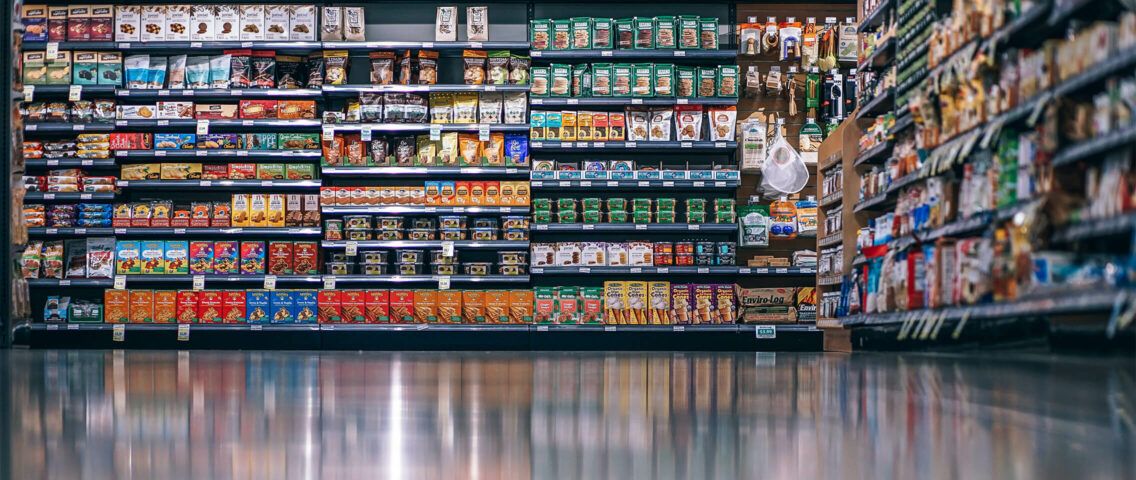What’s the key to dark store profitability?
Aug 12, 2021 • 4 min
Global disruptions fueled the consumer adoption of online shopping over the last few years, leaving traditional retailers scrambling to adjust to meet e-commerce demand. Now, those same retailers face a new challenge: fixing margin-killing efficiency issues to make online channels profitable.
The rise of “quick commerce” only compounds this pressure. Quick commerce retailers like Delivery Hero up the ante with same-day delivery promises ranging from within an hour of order placement to as short as 10 minutes!
As consumer expectations for convenience continue to rise, all retailers — whether omnichannel, e-commerce, or quick commerce — must take action. Retailers are increasingly using networks of dark stores across densely populated areas to improve online fulfillment, but retailers need extreme supply chain efficiency to deliver on promises of convenience while achieving profitability.
What is a dark store?
A dark store (sometimes “dark shop”) is a retail distribution center or warehouse that is not open to the public but is used to fulfill online orders. These stores are designed to optimize the picking and packing process for e-commerce, ensuring quick and efficient delivery to customers.
The dark store model differs from brick-and-mortar, physical retail stores in that “dark” locations focus solely on online order fulfillment. This shift to a business model involving dedicated, non-customer-facing facilities enables companies to meet rising e-commerce demand with greater speed and accuracy by:
- Ensuring optimal operational efficiency.
- Reducing home delivery times.
- Improving inventory management.
The dark store concept exploded in popularity during the pandemic, but their use is unlikely to taper off as more consumers order online. In fact, some experts predict the dark store market to surpass half a trillion dollars by 2034.
AI-driven forecasting and replenishment drives dark store availability
As retailers face rising expectations, they still struggle with older, more familiar challenges. (Think new product introductions and mixed product assortments of both fast and slow movers.)
AI has become a foundational requirement to automate and improve forecast accuracy, improving dark store availability while eliminating hours of manual planning each week.
Fortunately, they can easily overcome these challenges with AI supply chain technology, even when the pressure is turned up. Solutions equipped with machine learning can help retailers model the complexities of demand variation, whether from planned promotions, weekday variation, seasonality, or localized demand-influencing factors such as events and weather forecasts.
More importantly, it can do this automatically, processing more retail data than any team of human planners ever could. AI has become a foundational requirement to automate and enhance forecast accuracy, improving dark store availability while eliminating hours of manual planning each week.
An advanced replenishment system can leverage that forecast to balance the risk of stock-outs with the risk of waste for every order based on inventory and demand levels. This capability becomes extremely important for operations requiring fresh food inventory management, such as grocery stores. High availability is a crucial target for any retailer, but it’s especially important for online retailers for whom substitutions can be quite challenging.
Space optimization improves dark store picking efficiency
Shoppers don’t enter dark stores, but good space planning is still critical to meeting the value proposition of extreme speed. Space is at a premium in small-format dark stores, so space and inventory planning teams must work hand-in-hand to achieve the highest possible availability and the greatest possible speed. This is especially true for quick commerce retailers, whose goal is to pick orders within minutes of placement.
Dark store planogramming approaches can vary significantly from retailer to retailer depending on their picking strategy. Some retailers shelve items within a category together in a traditional, store-like planogram familiar to pickers. Others choose not to follow traditional retail planograms, instead separating similar items to decrease the likelihood of fast-moving pickers grabbing the wrong product for dark store order fulfillment.
Regardless of planogram approach, it’s a good practice to reserve an area for your most-picked items at the front of the store to accelerate picking speed for your highest-demand products. These “most-picked” items may change throughout the year based on seasonal trends or major holiday events like Halloween or Christmas.
The right planning solution can automate dark store-specific shelf and inventory optimization based on localized demand forecasts.
The right planning solution can automate dark store-specific shelf and inventory optimization based on localized demand forecasts. A unified system that draws demand data into planogram creation can optimize not only the shelf space per product, ensuring efficient inbound goods flow, but also localized product positioning, ensuring high-demand items for each store are easy to pick efficiently.
READ MORE: Boost sales and profitability through automated, store-specific planogram optimization
Furthermore, optimizing shelf space allotments to match localized replenishment plans for each product enables direct-to-shelf replenishment. Retailers can fill center store shelves up with fewer inbound deliveries when local space plans inform replenishment plans. As a result, retailers see lower goods handling costs and less risk of stock-outs from items waiting to be shelved.
Achieve dark store profitability with optimize planning
Anyone working in grocery and convenience today — whether quick commerce, e-commerce, or omnichannel retail — needs a best-in-class retail planning solution if they hope to compete for their shoppers’ online business.
Accurate, granular demand forecasting is the foundation for high availability, but that data must inform both replenishment and space planning to fully deliver on the promise of fast delivery that will improve the customer experience and ensure repeat business.



